Properties:
- Group- organic gems
- Crystal system-orthorhombic
- Composition- principally CaCo3
- Colour-white, cream, black, blue, yellow, green or pink
- Form\Habit- reniform
- Hardness-3
- Cleavage- none
- Fracture-uneven, brittle
- Lustre- pearly
- Streack-white
- Specific gravity-2.7
- Trancperency-opaque
Pearl is a concretion formed by a mollusk and consisting of the same material as the mollusk’s shell, which is principally the mineral aragonite. In addition to aragonite, the shell contains small amounts of conchiolin, a horn-like organic substance; together these are called nacre or mother of pearl. The finest pearls are those produced by mollusks whose shells are lined with mother-of-pearl; such mollusks are limited to certain species of salt-water oysters and freshwater clams. The shell sectreting cells are located in a layer of the mollusk’s body tissue called the mantle. When a foreign particle enters the mantle, the cells build up more or less concentric layers of pearl around it to protect the mantle. Baroque pearls are irregularly shaped pearls that have grown in muscular tissue; blister pearls are those that grow adjacent to the shell and are flat on one side.
Pearls are valued by their translucence, luster, play of surface color and shape. The most valuable are spherical or drop like, with a deep luster and good color play. In the jewelry industry, salt water pearls are commonly reffered to as oriental pearls; those produced by freshwater mollusks are called freshwater pearl. Cultured pearls are those that have been grown on a pearl farm. Tiny sphere of mother-of-pearl is implanted in the mantle of the nacre-producing mollusk, which is then harvested up to two years later. The color of pearl varies with the mollusk and its environment. A pearl can be any delicate shade from black to white, cream, grey, blue, yellow, green, blue, yellow, lavender and mauve. Rose-tinted Indian pearls are particularly prized. Pearls vary from the size of tiny seed-called seed pearls to one large baroque pearl that weighed 90g. (3 or). Some of the finest pearls are found in the Persian Gulf from Oman to Qatar, the waters between India and Sri Lanka, and the islands of the South Pacific. The Gulf of California, the Gulf of Mexico, and the waters of the Pacific coast of Mexico produce dark hued pearls with a metallic sheen, as well as good-quality white pearls. Freshwater pearling has been known in China from before 1000BC, and there is a pearl industry in the streams of Bavaria. Freshwater pearls have also been recovered from the Mississippi River in the USA and several rivers in England and Irland ( “Rocks and minerals” Ronald Louis Bonewitz, London 2008) .
In ancient Greece and Roma there were plenty beliefs about pearl, people were giving a special place, using it in magic. It was counted in one line with diamond, ruby, emerald and sapphire as one of the precious parts in queen’s jewelry collections. Below you can see how and where human imagination used pearl and during centuries created masterpieces.
Saint Nikolai icon was made in XV centuries. In the middle it has a sapphire cameo cut in Byzantine Empire much earlier than the icon itself. You can see a line of pearl which seems is used for showing light.

The Canning Jewel has a center that is a large baroque pearl set in gold with diamonds, rubies, pearls and enamel. It is now housed at the Victoria and Albert Museum in London.
Mermen, like mermaids, were magical sea creatures. Like the Sirens who attempted to seduce Odysseus (Ulysses) mermen could sing in such a way as to mesmerize those who listened.
They were also said to be able to summon rather severe storms as well as attempting to kill sailors while at the same time trying to save them.
 Much later Jewelry art with developed technology and new taste of the beauty made chefd’oeures as:
Much later Jewelry art with developed technology and new taste of the beauty made chefd’oeures as:
It appeared in Baselworld 2014 and was one of the bests not only how it was looking but also with the meaning “Sun and clouds” by Mikimoto. Can you pass by this thing and not to be amazed? I couldn’t! http://www.thejewelleryeditor.com
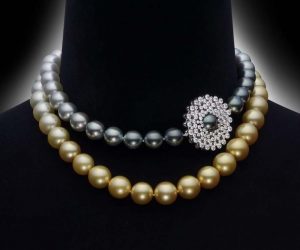
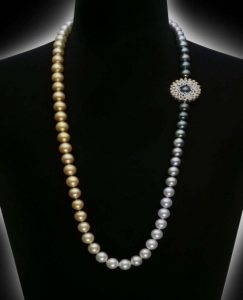
Colour
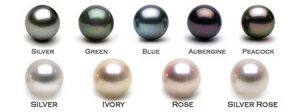
Luster

Shape

Size

Surface

Another thing is the origin of pearl and is it natural or it is cultivated.
Look here and remember almost all the information about pearl origin and colours:

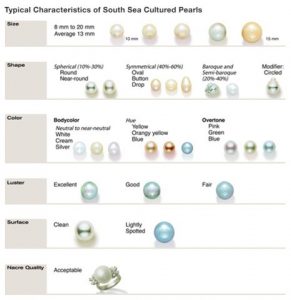

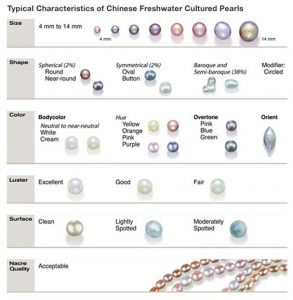
The thing we didn’t discuss yet is the concept of natural, exclusive and rare pearls existing in the world. These are small quantity examples, also several artworks especially in the style of art nouveau and museums full of pearl energy, ‘’must to see’’ things if you want to go deeper in this subject. Let’s see.
Abalone pearl from New Zealand
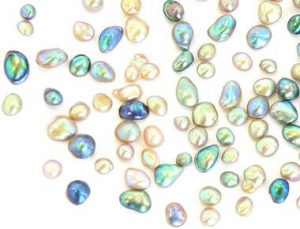
Conch Pearl from USA (Florida)

Melo pearl from Myanmar

Clam pearl from Atlantic Ocean and South Sea

These exclusive pieces are examples of how different can be pearls in the world but the subject is so big that famous schools and laboratories separate it from the other gemstones first of all as an organic one and then as a value in the gemstones hierarchy.
For more information I’ll advise you to visit at least two museums that I have seen in my life. The first one is The Bangkok Seashell museum. I think it’s important to see the colors and types of seashells and it’s a really good experience to enter to the pearl life and house starting with this point. Here you can also get an imagination about how long pearl exists in the world life.

 The second museum I want to share with you here is The Emirates NBD Pearl museum which is a gift from the late Sultan Al Owais, the founder of the National Bank of Dubai to the people of the UAE to remind them of their culture and heritage before the discovery of oil. It is founded later 16 October of 2007, currently more than 9000 people work and cooperate with the organization employing and making the biggest pearl home in UAE and other Arabian countries.
The second museum I want to share with you here is The Emirates NBD Pearl museum which is a gift from the late Sultan Al Owais, the founder of the National Bank of Dubai to the people of the UAE to remind them of their culture and heritage before the discovery of oil. It is founded later 16 October of 2007, currently more than 9000 people work and cooperate with the organization employing and making the biggest pearl home in UAE and other Arabian countries.
This is the chapter about where do I see pearl and what kind of jewelry attract me most of all. Of course they are plenty but I have a wish to show you my taste as I worked on this article more than you imagine and you can easily guess how many beautiful masterpieces I met. This article and not only this one are the mix of my own experience in gemstones life and my taste to others work and point of view or my window from ancient times up to modern culture.
Below are introduced some people, companies with their artworks. Let’s look at it with my eyes.

Tourmaline, cultured pearl, onyx and diamond choker, ‘Terry Perles’, Marina B, 1980s
The front collet-set with a hexagonal pink tourmaline, within a frame pavé-set with brilliant-cut diamonds, flanked by pear-shaped diamonds and calibré-cut onyx, on a flexible collar composed of seven rows of cultured pearls, signed Marina B, numbered, French assay and maker’s marks.
Emerald, cultured pearl and diamond pendant/brooch, Amr Shaker
Set with a cushion-shaped emerald weighing 104.97 carats, to a decorative mount highlighted with brilliant-cut diamonds and cultured pearls, suspending a similarly set fringe, signed Shaker, together with a gold chain measuring approximately 920mm.
Accompanied by SSEF report no. 72266, stating that the emerald is of Colombian origin, with a moderate

Another interesting masterpiece is Queen Mary’s Richmond Brooch, a large piece made from diamonds set in silver and gold in a scrolling design surrounding a central pearl, with a pearl and diamond pendant hanging below. It’s a flexible jewel – the central pearl and pearl pendant are detachable (Mary, as we know, was prone to switching around her jewels, and accordingly this pendant was once used in the Cambridge Lover’s Knot Tiara), more pendants can be added, the whole brooch can be used as a pendant itself, and Queen Mary even used it in her hair.
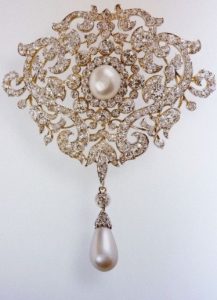
And finally the last thing I want to show is modern art creature. Galatea pearl carvings and modifications of the gemstone by San Dimas (Culture pearl association of America).
As authors think: “Galatea’s carved pearl collection is a case in point. Take a strand of Tahitian carved pearls in your hand and you’ll see how the surface carving changes everything. The smoothed, polished designs reflect light beautifully, exposing the colors and depth of the pearl’s nacre like never before.”
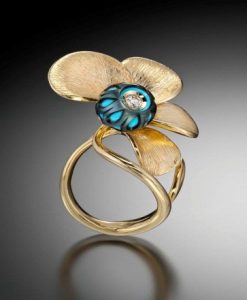
I hope the article is enough to look at pearl from different sides but if you want to get more information you have to research and go deeper to the subject, as it is endless. Thank you for attention.
Best Wishes Lilit Yeritsyan